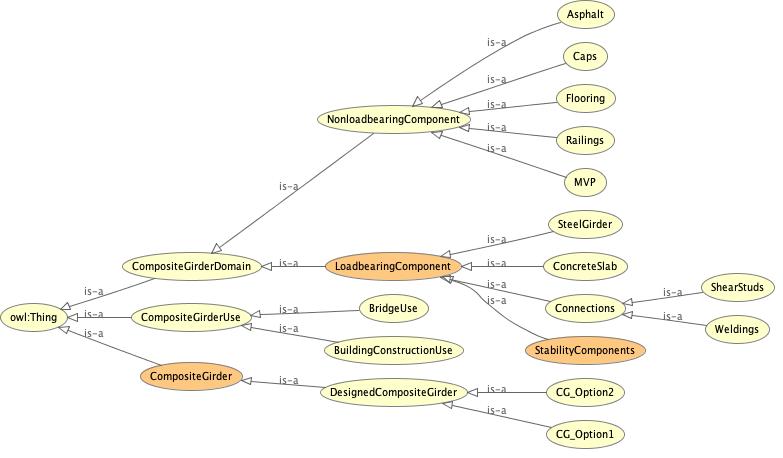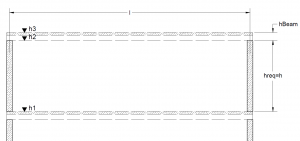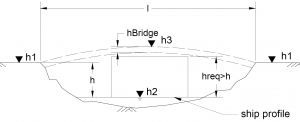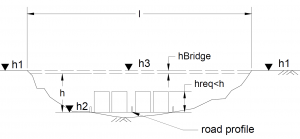Creating an Ontology
While a composite girder can be seen as both, a bridge and a structural building element, the calculation model will be the same. That is why an ontology was generated, which can be used to describe the structural element as well as the bridge. In order to be able to distinguish between the two cases, the ontology contains nonloadbearing elements, which are unique for a building, such as flooring, or a bridge, such as rails or caps. The loadbearing elements will be part of both cases.
High Performance Criteria (hpc)
A composite girder describes a girder, which combines both positive aspects of two commonly in construction used materials: The bending moment generates a tensile stress in the steel beam and a compression stress in the concrete slab. In order to be able to correctly calculate stresses at any point of the girder, the forces need to be distributed over the two materials. The ration of the Young’s modulus of steel (~210.000N/mm²) to the Young’s modulus of concrete (~31.000 N/mm²) is about 7. When loading the beam with a bending moment, this ratio results in a shift of the stresses in both components.
When creating the geometry of such girder, the line where it needs to be alligned to, will be generated automatically. Yet, a structural engineer will need further information in order to start a structural analysis. One crucial information is the moment of inertia, which is calculated according to the input geometry. During the method of calculation of the moment of inertia, the centroid line of the cross-section is calculated as well. With these two parameters, the structural analysis can be done.
For construction management reasons, it can be necessary to mesh the steel part of the girder into several parts and deliver it to the construction site where it is welded together. The lengths of these parts often depends on the size of the vehicle, they are delivered with.
Therefore, the following hpc were chosen for the implementation in DynamoBIM:
- Calculation of the moment of inertia
- guarantee the subdivisions of the beam elements, while keeping the required space under the structure
Implementation in DynamoBIM
In contrast to the ontology, the difference between a bridge girder and a construction girder is now not anymore defined by its nonloadbearing components, but by its shape: While a bridge can be both, curved and straight in vertical direction, the construction girder can only be straight. The reason for this is the definition of a bridge and a girder: A bridge is defined by its start-, endpoint and its height at central span, a construction girder’s height is defined by the bearing elements such as walls, columns or other beams. Depending on the crossed obstacles, the geometries can be generated as shown below.
Bridge 3D model:
Construction 3D model:
Composite Girder ontology model: compositegirder_1st_assignment
Composite Girder parametric model: group3_assignment3_compositegirder
Also check out the models for the Bridge and the Single Family House.



